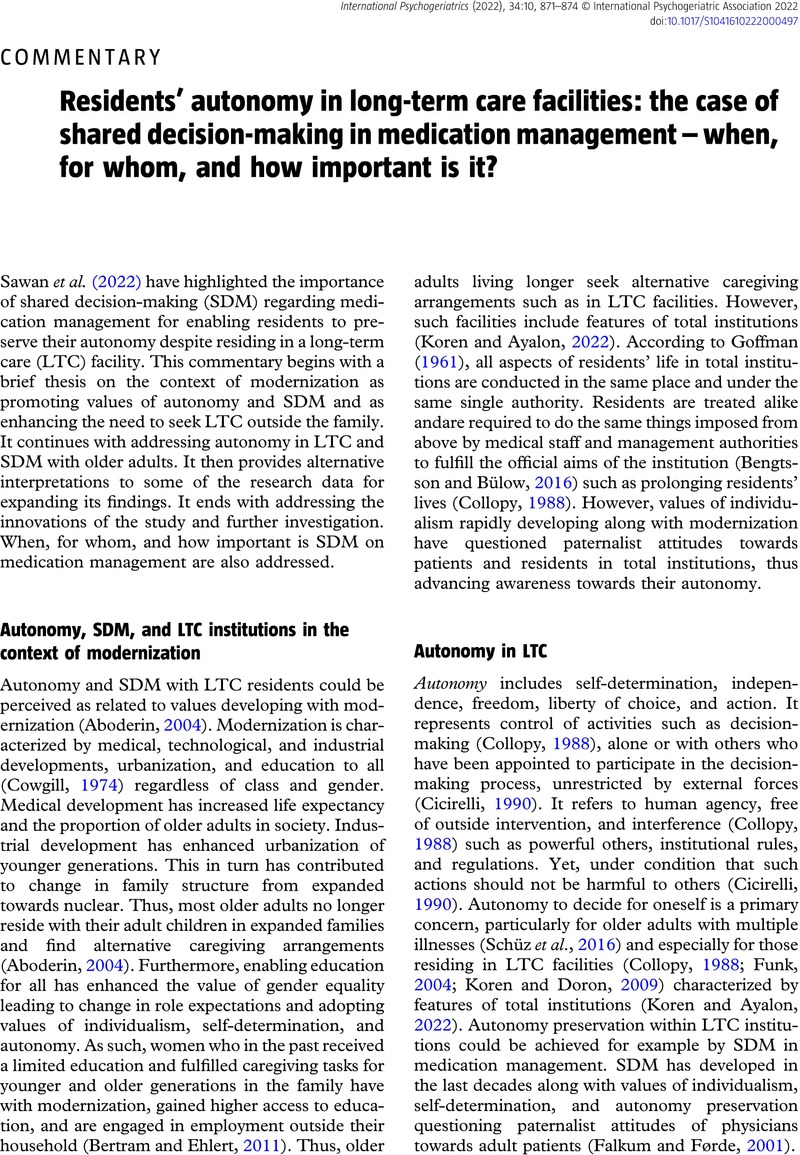Crossref Citations
This article has been cited by the following publications. This list is generated based on data provided by Crossref.
Kim, Da Eun
and
Kim, Min Jung
2023.
Factors influencing shared decision-making in long-term care facilities.
BMC Geriatrics,
Vol. 23,
Issue. 1,



